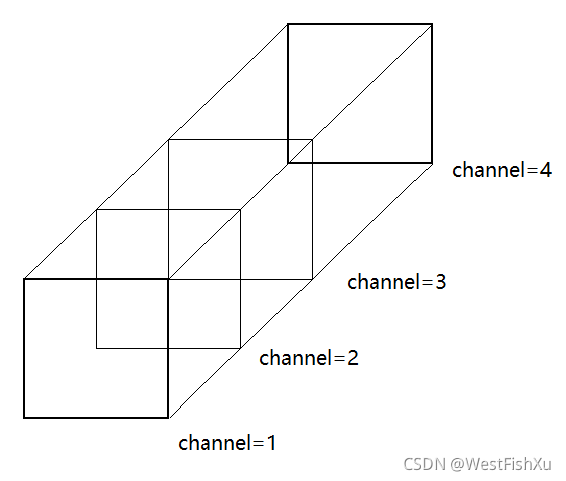Pytorch 常见损失函数实现
1.CrossEntropyLoss()函数
1.1.基本计算公式
1.2.Pytorch自带计算
Pytorch中计算的交叉熵:

其中自带的CrossEntropyLoss()函数的主要是将softmax-log-NLLLoss合并到一块得到的结果:
- Softmax后的数值都在0~1之间,所以ln之后值域是负无穷到0
- 然后将Softmax之后的结果取log,将乘法改成加法减少计算量,同时保障函数的单调性
- NLLLoss的结果就是把上面的输出与Label对应的那个值拿出来,去掉负号,再求均值。
nn.CrossEntropyLoss(weight: Optional[Tensor] = None, size_average=None,
ignore_index: int = -100,reduce=None, reduction: str = 'mean')
- weight(tensor): 1-D tensor,n个元素,分别代表n类的权重,如果你的训练样本很不均衡的话,是非常有用的。默认值为None。
- input : 包含每个类的得分,2-D tensor,shape为 batch*n
- target: 大小为 n 的 1—D tensor,包含类别的索引(0到 n-1)。
2.Focal Loss
2.1.基本计算公式基本计算表达式:

2.2.Pytorch实现
import torch
import torch.nn as nn
import torch.nn.functional as F
from torch.autograd import Variable
class FocalLoss(nn.Module):
r"""
Args:
alpha(1D Tensor, Variable) : the scalar factor for this criterion
gamma(float, double) : gamma > 0; reduces the relative loss for
well-classi?ed examples (p > .5), putting more focus on hard,
misclassi?ed examples
size_average(bool): By default, the losses are averaged over observations
for each minibatch.However, if the field size_average is set to False,
the losses are instead summed for each minibatch.
"""
def __init__(self, class_num, alpha=None, gamma=2, size_average=True):
super(FocalLoss, self).__init__()
if alpha is None:
self.alpha = Variable(torch.ones(class_num, 1))
else:
if isinstance(alpha, Variable):
self.alpha = alpha
else:
self.alpha = Variable(alpha)
self.gamma = gamma
self.class_num = class_num
self.size_average = size_average
def forward(self, inputs, targets):
N = inputs.size(0)
C = inputs.size(1)
P = F.softmax(inputs)
class_mask = inputs.data.new(N, C).fill_(0)
class_mask = Variable(class_mask)
ids = targets.view(-1, 1)
class_mask.scatter_(1, ids.data, 1.)
#print(class_mask)
if inputs.is_cuda and not self.alpha.is_cuda:
self.alpha = self.alpha.cuda()
alpha = self.alpha[ids.data.view(-1)]
probs = (P*class_mask).sum(1).view(-1,1)
log_p = probs.log()
#print('probs size= {}'.format(probs.size()))
#print(probs)
batch_loss = -alpha*(torch.pow((1-probs), self.gamma))*log_p
#print('-----bacth_loss------')
#print(batch_loss)
if self.size_average:
loss = batch_loss.mean()
else:
loss = batch_loss.sum()
return loss
参考:知乎专栏/Focal Loss 的Pytorch 实现以及实验
3.二分类Dice Loss
3.1.基本计算公式


以此计算二分类损失,X为预测每个像素点的概率值,Y为真实值,是一个同等大小的0/1矩阵,二者相乘即为X∩Y,再将每个元素求和得到|X∩Y|
当一个批次有 N 张图片时,可以将图片压缩为一维向量,对应的 label 也做相应的变换,最后一起计算 N张图片的 Dice 系数 和 Loss。
3.2.Pytorch实现
import torch
import torch.nn as nn
import torch.nn.functional as F
import numpy as np
def make_one_hot(input, num_classes):
"""Convert class index tensor to one hot encoding tensor.
Args:
input: A tensor of shape [N, 1, *]
num_classes: An int of number of class
Returns:
A tensor of shape [N, num_classes, *]
"""
shape = np.array(input.shape)
shape[1] = num_classes
shape = tuple(shape)
result = torch.zeros(shape)
result = result.scatter_(1, input.cpu(), 1)
return result
class BinaryDiceLoss(nn.Module):
"""Dice loss of binary class
Args:
smooth: A float number to smooth loss, and avoid NaN error, default: 1
p: Denominator value: \sum{x^p} + \sum{y^p}, default: 2
predict: A tensor of shape [N, *]
target: A tensor of shape same with predict
reduction: Reduction method to apply, return mean over batch if 'mean',
return sum if 'sum', return a tensor of shape [N,] if 'none'
Returns:
Loss tensor according to arg reduction
Raise:
Exception if unexpected reduction
"""
def __init__(self, smooth=1, p=2, reduction='mean'):
super(BinaryDiceLoss, self).__init__()
self.smooth = smooth
self.p = p
self.reduction = reduction
def forward(self, predict, target):
assert predict.shape[0] == target.shape[0], "predict & target batch size don't match"
predict = predict.contiguous().view(predict.shape[0], -1)
target = target.contiguous().view(target.shape[0], -1)
num = torch.sum(torch.mul(predict, target), dim=1) + self.smooth
den = torch.sum(predict.pow(self.p) + target.pow(self.p), dim=1) + self.smooth
loss = 1 - num / den
if self.reduction == 'mean':
return loss.mean()
elif self.reduction == 'sum':
return loss.sum()
elif self.reduction == 'none':
return loss
else:
raise Exception('Unexpected reduction {}'.format(self.reduction))
参考:GitHub/hubutui/DiceLoss-PyTorch
4.多分类Dice Loss损失函数
4.1.基本计算思路
当有多个分类时,label 通过 one hot 转化为多个二分类,如下图所示:

每个channel 切面,可以看作是一个二分类问题,所以多分类 DiceLoss 损失函数,可以通过计算每个类别的二分类 DiceLoss 损失,最后再求均值得到。
4.2.Pytorch实现
class DiceLoss(nn.Module):
"""Dice loss, need one hot encode input
Args:
weight: An array of shape [num_classes,]
ignore_index: class index to ignore
predict: A tensor of shape [N, C, *]
target: A tensor of same shape with predict
other args pass to BinaryDiceLoss
Return:
same as BinaryDiceLoss
"""
def __init__(self, weight=None, ignore_index=None, **kwargs):
super(DiceLoss, self).__init__()
self.kwargs = kwargs
self.weight = weight
self.ignore_index = ignore_index
def forward(self, predict, target):
assert predict.shape == target.shape, 'predict & target shape do not match'
dice = BinaryDiceLoss(**self.kwargs)
total_loss = 0
predict = F.softmax(predict, dim=1)
for i in range(target.shape[1]):
if i != self.ignore_index:
dice_loss = dice(predict[:, i], target[:, i])
if self.weight is not None:
assert self.weight.shape[0] == target.shape[1], \
'Expect weight shape [{}], get[{}]'.format(target.shape[1], self.weight.shape[0])
dice_loss *= self.weights[i]
total_loss += dice_loss
return total_loss/target.shape[1]